Limited Series: Murder Inc, Ringside, That Texas Blood, Newburn, November
Limited crime comics series and five recommendations
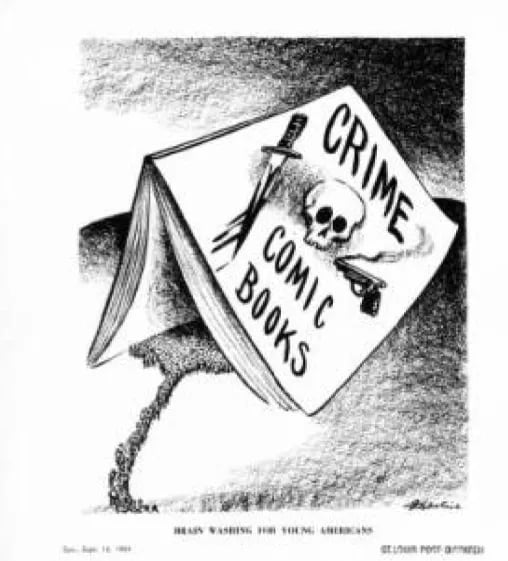
Last week we talked about long-running U.S.crime comics series. This week I want to talk about the changing nature of the comic series, at least as far as crime comics are concerned. Long running crime comics series that lasted many years and many issues published on a relatively consistent schedule seem to be out and series with a smaller number of issues that can be collected in just a couple of volumes (at most) seem to be in. It seems appropriate to borrow a TV term here, limited series.
I don’t know the answer to this week’s idea. I just want to be up front about that. If someone can shed some light on this, please do. Are publishers only willing to sign off on series that have a finite runtime and a firm end date? Here we have another way that crime comics series can be published. This topic was unintentionally hinted at in the 5 to Get You Started post by including A Righteous Thirst for Vengeance, which ran a complete story at 11 issues.
Are these books series? Of course. Hell, almost every crime comic published these days in the US might fall into this category. Comics are (mostly) a series medium so this is just another presentation of how the crime comics series can look. And that’s all we’re talking about here, different ways that crime comics series can look. One hundred issues of 100 Bullets is a series and so is eleven issues of A Righteous Thirst for Vengeance. It just feels like the footprint for crime comics series is getting smaller.
That can affect the writing too, right? Now we’re more likely to see a tight story line and less likely to see expansive world-building and room for a larger cast of characters to have their moments and arcs. For the purposes of this post though, I’m not really interested in creating parameters in the way that TV does, only in borrowing a potentially useful term that most folks have some understanding of. We just intuitively understand that 62 episodes of Breaking Bad is different (not better or worse, just different) than 10 episode seasons of Fargo.
So today let’s look at five limited crime comics series.
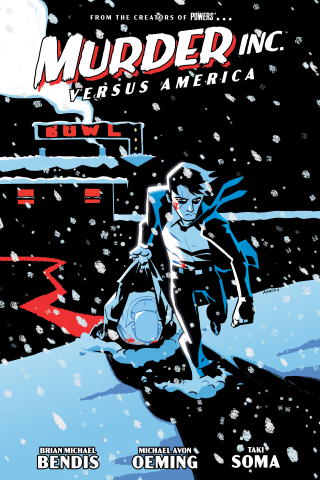
Murder Inc. is written by Brian Michael Bendis with art by Michael Avon Oeming. It was published by Dark Horse. It consists of three volumes of six issues each (Volume 1: Valentine's Trust, Volume 2: Versus America, Volume 3: Jagger Rose). Volumes should be read in order, each volume builds off the last, and the story is complete in three volumes. It is available in print, digitally, and through digital library services.
Murder Inc is an alternate history crime story. When organized crime was at its peak in the US they had enough power to split from the United States. So now there are multiple territories within the US. This arrangement extends to the present day and also includes twists on historical events that we are familiar with like the Kennedy assassination and 9/11.
Decades later we meet recently made guy Valentine Gallo, whose father was also a made guy who was killed. Murder Inc. is a well written book that balances immersing the reader in this world while also giving them the necessary information about it without getting too exposition heavy. There’s also something intuitive about the idea that different organized crime groups control different parts of the country. It just feels right, like it makes sense. So it’s an easy concept to slide into.
Within this story, some familiar crime fiction beats will emerge. Who can be trusted, who is a rat, how much power do the Feds have. Crime writer Jordan Harper once talked about a certain type of crime fiction where someone or a small group essentially go to war with The State and how The State brings the full force of its might to bear against these folks trying to buck the system. Murder Inc. literalizes the fight against The State. And things get bad.
"This is just a family that has made a decision, a very very bad decision, that they're going to take on The State in a blood feud. Which you need to find another family to get into a blood feud with. You do not get into a blood feud with The State because you cannot and will not win." — Jordan Harper on Watch With Jen podcast
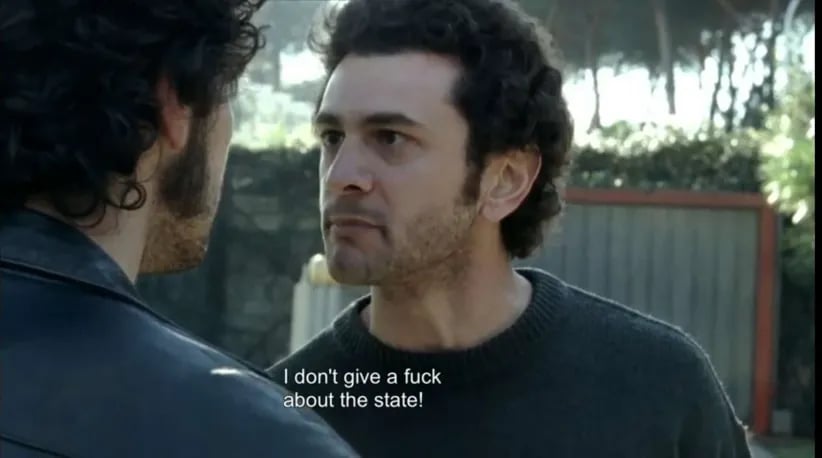
In addition to the story of Valentine Gallo we have Jagger Rose, the most trusted killer the gangsters have, as a co-lead. She is a fun character whose back story is integral to the story of Murder Inc. Together they make a formidable team.
Oeming’s art is really good too. There is a panel of Gallo and Rose arriving in Vegas that is particularly vibrant and Technicolor striking.
Murder Inc. is a Feds vs. gangsters story blown up to a massive scale. Let’s just say that the end of volume 1 ends with a bold act of violence that can only be interpreted as an act of war.
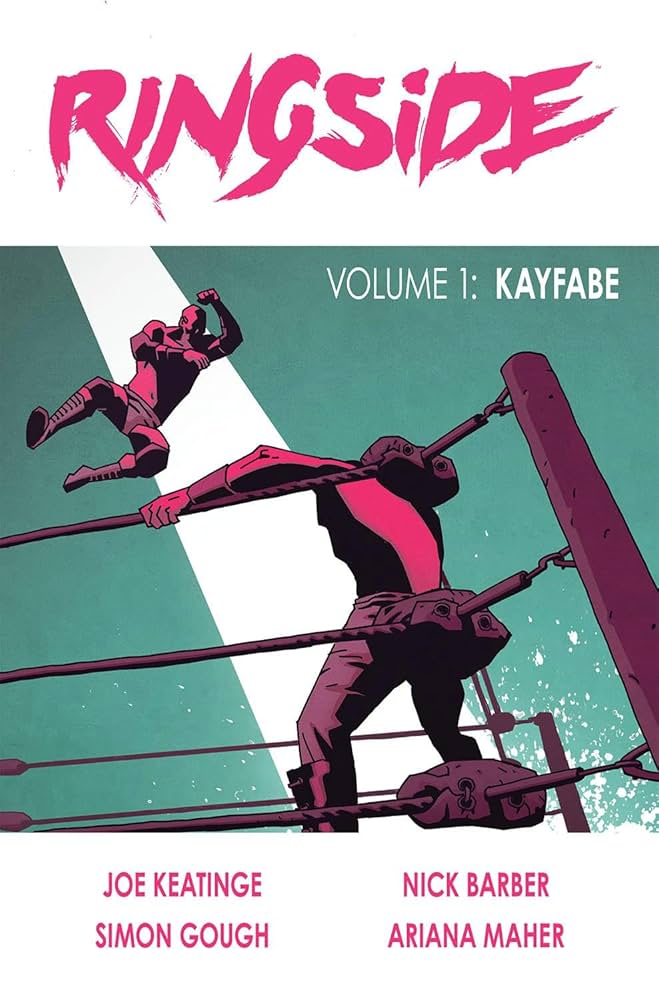
Ringside is written by Joe Keatinge with art by Nick Barber. It was published by Image. It consists of three volumes of 5 issues each (Vol. 1 Kayfabe, Vol. 2 Work, Vol. 3 Shoot). Ringside should be read in order and is complete in three volumes. It’s available in print, and digitally.
Professional wrestling is an interesting subject matter for fiction. It's an artform with story telling at its heart, there are heroes and villains writ large, it has its own history and language. It's a great spectacle frankly. As enticing as the world of wrestling is for its fans, there's a barrier in place for the wider audience. You have to show them the ropes (hurr hurr hurr) of that world then tell the story in that world. The world of wrestling has real life characters straight out of crime fiction. For example, Dino Bravo's life is an already outlined crime novel that just needs to be fleshed out (his life is in the DNA of Ringside’s main character). What I’m saying is that crime fiction and wrestling work well together.
Wrestling is a business that chews people up and spits them out and also has a massive power and money imbalance. All of the power lies at the top in the hands of a few and all of the money flows in that direction too off the backs of a labor force that is literally putting their bodies on the line. The powerful elite are entrenched in corrupt systems of power.
Our main character in Ringside is Danny Knossos, a former top guy on the ass end of his career. He returns home when a former lover is in trouble with some unsavory criminal types. When he left town years earlier, he left things in a bad way with just about everyone. It’s like Kevin Nash once said in a promo, “why burn a bridge when you can blow it up instead.” Danny’s return home is going to blow open old feuds and things are going to go real bad real quick.
In addition to Danny’s story, Ringside is interested in the meat grinder aspects of being the scenes wrestling promotion politics and the cold ruthlessness that rules. We are introduced to a supporting cast of wrestlers at various stages in their careers and we see the different ways that the system crushes them.
Powerful elites. Exploitation of hopes and dreams. Corrupt systems. The house always wins. That’s noir.
I would pair Ringside with Bobby Matthews’ book Living the Gimmick, Ray Banks’ short story “The Last Kayfabe”, Blood Red Turns Dollar Green by Paul O’Brien, and Dino Bravo’s episode of The Dark Side of the Ring.
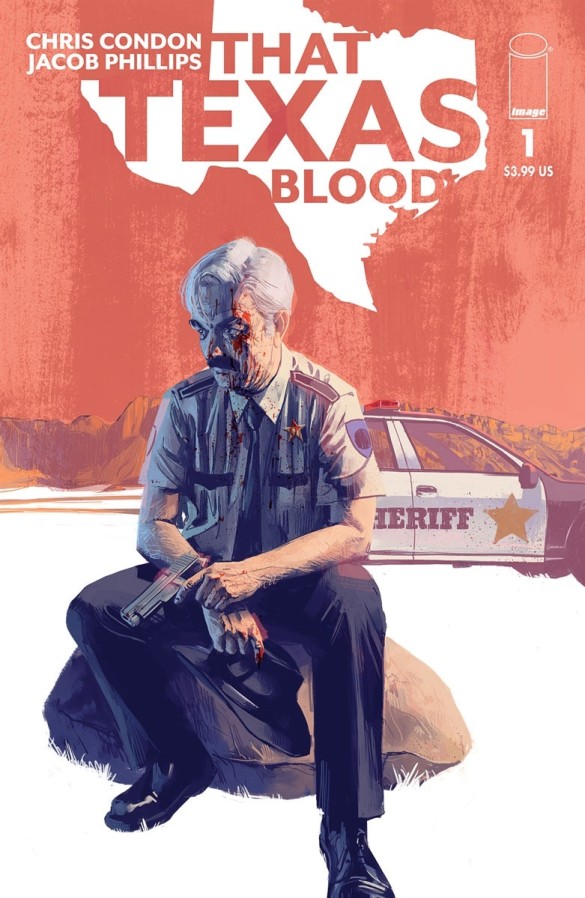
That Texas Blood is written by Chris Condon with art by Jacob Phillips. It was published by Image. It consists of three volumes and each volume is a complete story arc. That Texas Blood is available in print, digitally, and through digital library services.
The main character, Sheriff Joe Bob, is the throughline character in each arc and the entire series. The volumes of That Texas Blood don’t necessarily have to be read in order. The volumes do take place at different times, so events in volume 2, which is set in the past for example, adds to what we already know about the character from volume 1. We get to see some of the events that helped shape him as more aspects of his career are explored.
Joe Bob is a great character. He’s like a counterpart to the Sheriff in No Country for No Men. In No Country for Old Men, Ed Tom Bell has to confront the evils that he’s faced and you can argue that he’s been deceived by nostalgia. Once that mask has been ripped, he sees no way back to the past that he (falsely) remembers as idyllic, and is ready to hang things up. Joe Bob was never deceived by nostalgia. In volume 1 he’s 70 years old and the series is, in some ways, an exploration of the shit he’s been through. Joe Bob’s been exposed to the horrors of the world and has no blindfolds on. He knows things can be pretty bad and that things were pretty bad in the past but there’s no deception. He remembers the past but lives in the present connected to friends and family. He still takes a moment to stop and appreciate a sunset or pet a stray cat. He’s stronger because of the bonds he’s forged. So when he’s (again) faced with some gnarly shit he never throws his hands up. It’s like he says in his monologue that opens the book, “But…you still just gotta keep wakin’ up.”
Sheriff Joe Bob is a good man doing his best to help those in his town. In the second volume, we jump back a couple of decades, and get to see the bloody history of the town and how those horrors can affect someone, and a town, for good.
To the best of my knowledge, That Texas Blood has not been formally ended. Given the nature of the series, with each arc being a complete story that adds to the aspects of Joe Bob, if we don’t get any more stories, it could be considered complete. Nothing is left hanging but hopefully we’ll get more.
I would pair That Texas Blood with S.A. Cosby’s All the Sinners Bleed, and since I mentioned it, No Country For Old Men (either the book or the movie).
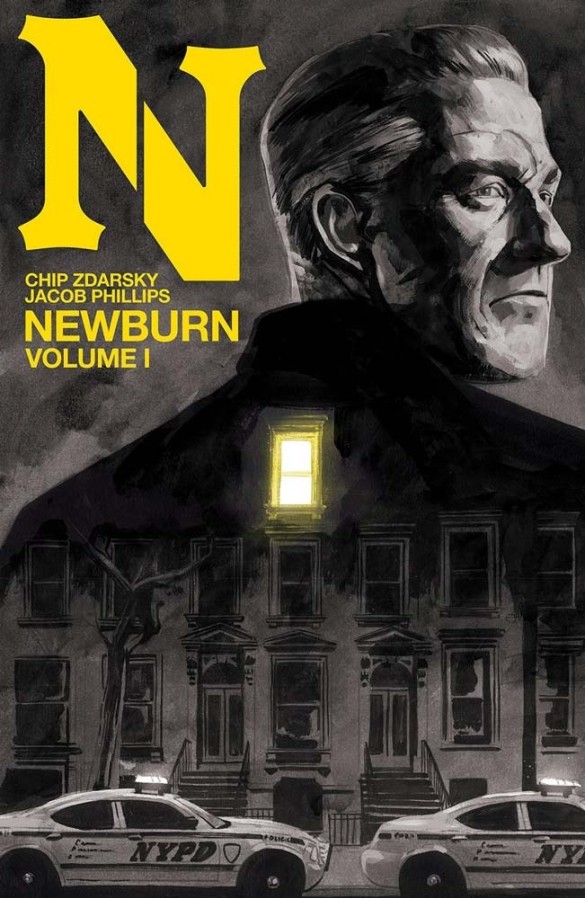
Newburn is written by Chip Zdarsky with art by Jacob Phillips. It was published by Image. It consists of two volumes with 16 issues in total and is a complete story. It is available in print, digitally, and through digital library services. Of note to the larger series discussion, some of the publisher’s web info for Newburn calls it an “ongoing series”.
Newburn is an ex-cop turned PI. The major crime families in NY keep him on retainer to investigate any problems that may arise in their dealings with each other. If one of their guys gets killed or one of their spots gets hit, Newburn, as a neutral third party, gets to the bottom of it and presents his findings to the council so as to avoid all out war. He has an arrangement with some cops on the force that knew him back in the day and are somewhat aware of the service he provides. He calls himself “a U.N. Inspector wandering through a war zone.” Newburn takes a liminal space character (the private detective) and inserts him into a liminal space situation.
Much like the peace between the major crime families, the concept at the heart of Newburn is a fragile one. The more the reader buys into the premise, the better the story will read. Zdarsky is a good writer though with a lot of good comics to his name so he can be trusted. To his credit, Zdarsky recognizes the fragility of the premise and its seams start to show and becomes part of the tension that drives the story.
Newburn is a character cut from another time. Chisled, lean and mean, salt and pepper hair. He’s confident, competent, and capable. He’s deadly and feared and he has a reputation. Crime fiction readers (and some crime flick fans) will recognize the Parker influence on Newburn, which the creators have acknowledged.
When Parkerburn brings a new partner on, we get to see the inner workings of this arrangement, the major players, their tensions and motivations, and the inner sanctum where big decisions are made. This is a fairly fleshed out idea and secondary world.
What surprised me on re-read was the episodic nature of some of the storylines in the first volume (“What happens if Newburn gets sent to jail, find out on next week’s Newburn”). Not only does this work for fleshing out the story and the world but it just has the feel of some old crime show that never was made but should have existed.
The set-up may be a little over the top but it’s executed with a straight face and the result is a compelling crime story.
I would pair Newburn with the Parker novels (for the influence on the Newburn character and because they’re fucking awesome) and maybe the 1981 movie Prince of the City (for the grimy NYC elements).
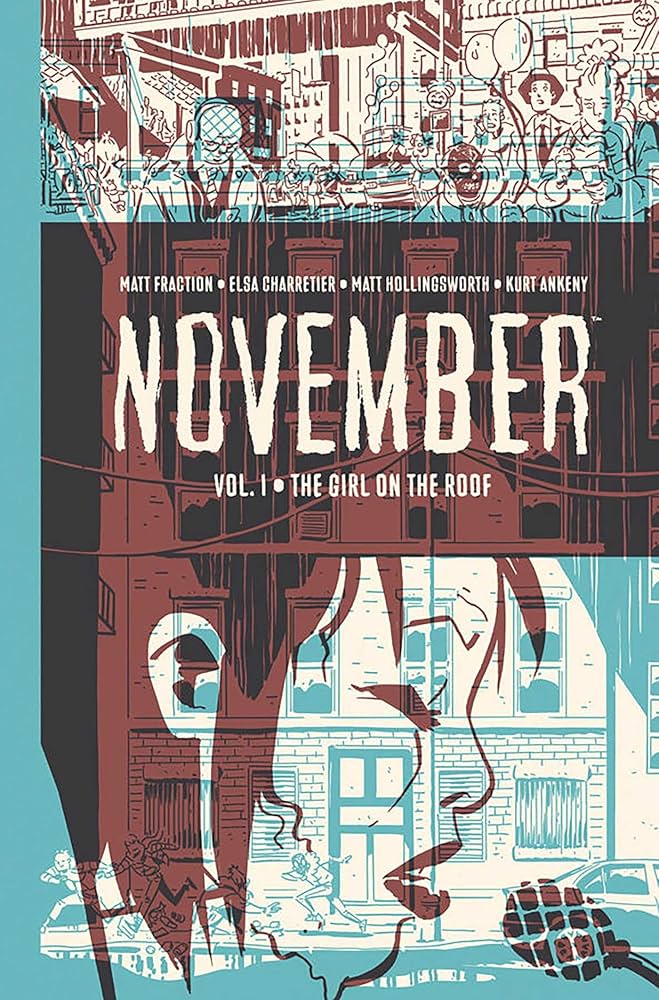
November is written by Matt Fraction with art by Elsa Charretier. It was published by Image. November is a full story in four volumes of “graphic novellas” of 80 pages each. Note also the different way that this title is being categorized as a series. At first glance it seems a little closer to the European model of publishing a series, which we’ll talk about in a couple of weeks. November is available in print, digitally, and through digital library services.
November utilizes a complex story structure with intersecting arcs, time jumps, multiple characters, and information given to the reader in a deliberate way for maximum effect. So I don’t want to talk too much about plot stuff too much. The first volume introduces the reader to the first of the three female leads. It’s moody, atmospheric, and mysterious. It’s ominous and has an oppressive noir feel to it. Subsequent volumes will give us the stories of the other women and prominent players. From that first volume a tale of violence and corruption will take shape piece by piece. Within that story there are small opportunities for these characters to do good and combat the corrupt system.
When taken as a whole, November is a really good piece of crime fiction and its structure never becomes too unwieldy for the story being told. The structure also never becomes gimmicky so it holds up to re-reads.
For their unique structure that carefully doles out narrative information, I would pair November with Memento and The Usual Suspects.
Have you read any of these titles? Do you prefer a shorter series or a longer running series? Has the nature of the series in the U.S. changed?
You just read issue #4 of Bad Karma, Loose Ends & Stray Bullets: Exploring the World of Crime Comics. You can also browse the full archives of this newsletter.